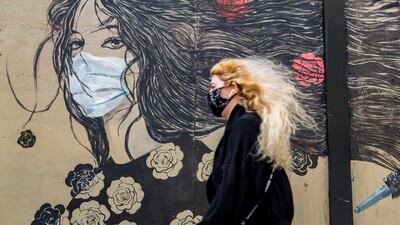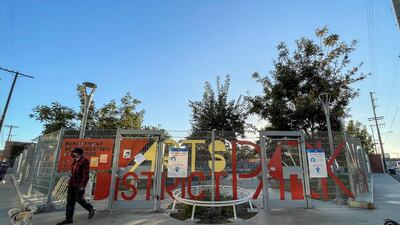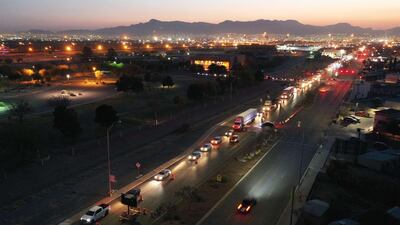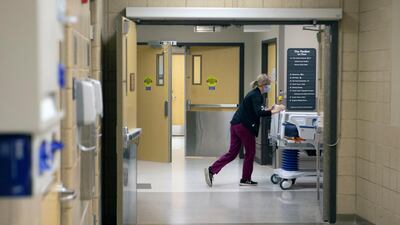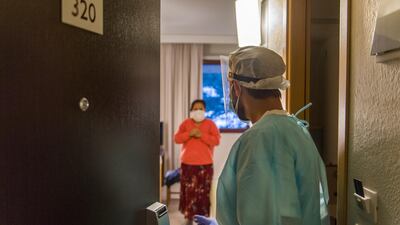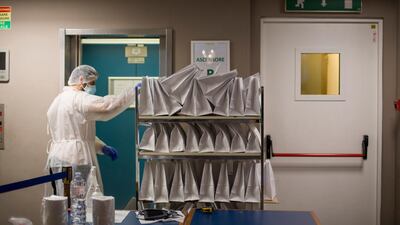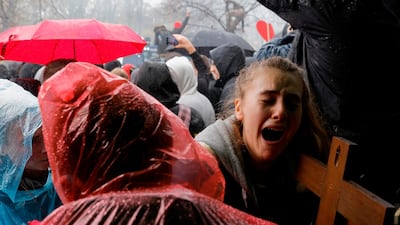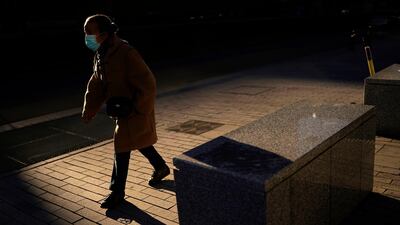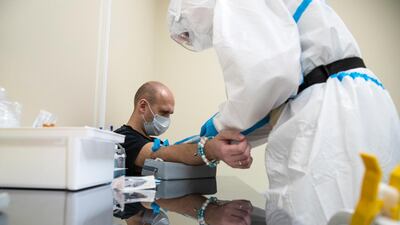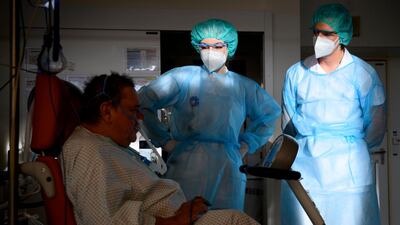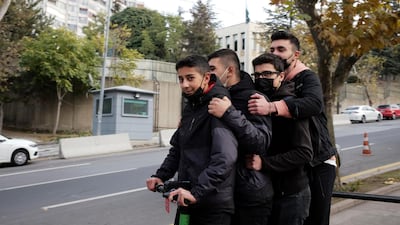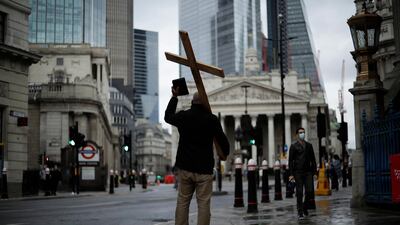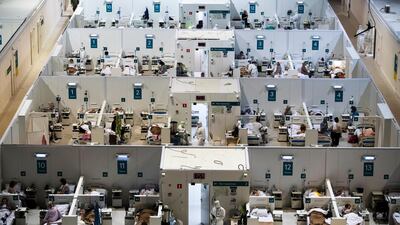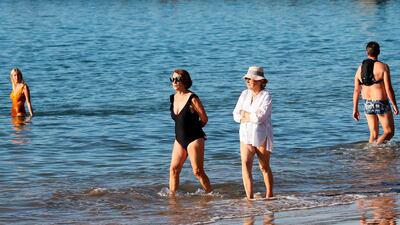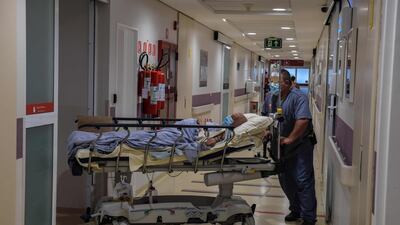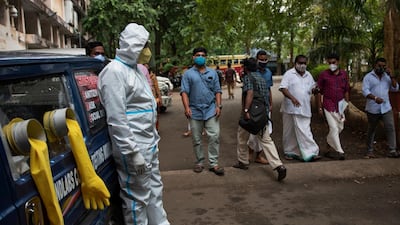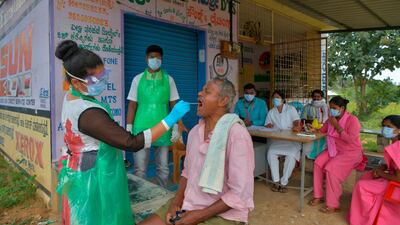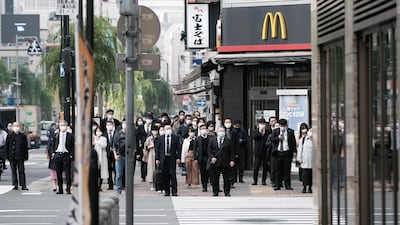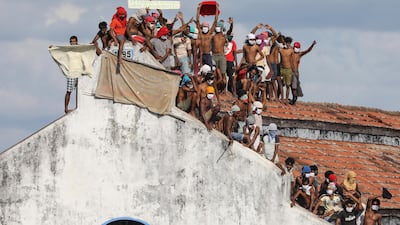With clinical trials suggesting that some coronavirus vaccines could be more than 90 per cent effective, hopes are high that a return to normal life could be on the horizon.
But just how soon could the world see an end to one of the most common measures to prevent the spread of the virus: wearing masks?
To keep infections to a minimum, the UAE has imposed stricter rules on mask wearing than many other countries, with Dh3,000 fines levied against on those who break the rules.
The World Health Organisation describes masks as “a key measure to suppress transmission and save lives” and says they should be used alongside – not instead of – other measures such as physical distancing, hand washing and good ventilation.
Vaccination programmes are considered essential if societies are to phase out mandatory use of face coverings.
But these are likely to take months at least to be completed, even in nations with early access to supplies. As a result, doctors do not expect mask wearing to end any time soon.
“Even if we do have a vaccine, it will take a longer time to get the whole population completely vaccinated. Unless that’s done, there’s always the risk of spread of infection,” said Dr Ashar Jamal, an emergency medicine doctor at Al Zahra Hospital in Sharjah, who previously had Covid-19.
Given the time that it will take to vaccinate populations, Dr Jamal predicts it will be perhaps six to eight months before the requirement to wear masks can be lifted.
Vaccines mean that, eventually, life “will probably go back to very near normal”, according to Dr Andrew Freedman, an infectious diseases specialist at Cardiff University in the UK. But he said this would depend on jabs preventing the spread of infection as well as preventing illness. He too said it was likely to be months at least before mask wearing is no longer needed.
“It could be as early as the spring, but it may be the summer, perhaps, in many countries,” he said.
Trends tracked during the Spanish flu pandemic, which began in 1918, showed that people stopped wearing masks quickly once rules changed.
Dr J Alex Navarro, of the University of Michigan’s Centre for the History of Medicine, researched mask wearing in the US during that pandemic for the US Defence Threat Reduction Agency and the Centres for Disease Control.
More than a decade before Covid-19 emerged, these organisations were interested in the value of mask-wearing in the event of a new disease outbreak.
Mask-wearing was compulsory in many American cities when Spanish flu was rife and was used alongside other measures such as the closure of dance halls, cinemas and billiards halls.
Ordinances requiring mask wearing were often unpopular, with San Francisco even having a campaign group called the Anti-Mask League.
Penalties for not wearing a mask started at about $5 (Dh18.37), or roughly a day’s wages for a factory worker at the time, and reached as much as $100 (Dh367.30), plus jail time.
“These non-pharmaceutical interventions did work – they slowed the circulation, they reduced the peak as well as overall mortality and morbidity,” said Dr Navarro.
Many cities lifted requirements to wear masks by November 1918, when the First World War ended, in the hope that the worst of the pandemic was over and following the “large-scale opposition” to mask wearing.
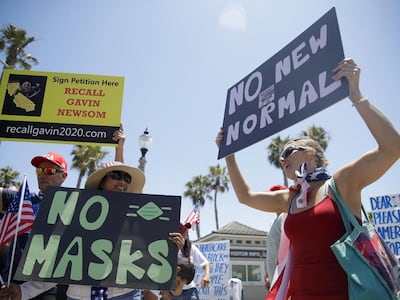
After restrictions were lifted, infection rates spiked in some areas, leading Denver, for example, to issue a new mask order.
“By then the war is over, people have been told already the epidemic is over, so you start to get epidemic fatigue, fatigue with these measures,” said Dr Navarro.
“People got back to pre-pandemic normalcy quickly – in some places too quickly.”
While mask-wearing did not continue significantly in the US after the pandemic, in other parts of the world, notably Japan, masks remained popular. Their use was further encouraged by subsequent events, such as the Great Kanto Earthquake of 1923, which created ash and smoke, by increases in pollution levels in the 1950s and higher rates of hay fever sparked by tree planting.
More recent disease outbreaks, notably Sars in 2002-04 and swine flu in 2009, and heavy air pollution, have made masks common around East Asia, including in China.
While researchers have said mask wearing in East Asia is a “descriptive norm” (a common behaviour) and an “injunctive norm” (something that society approves of), this is not mirrored in many other parts of the world.
So, once current requirements to wear masks end, some observers do not think mask wearing will remain common worldwide.
Dr Navarro noted the opposition to mask wearing in the US and, while cautioning that predicting the future is difficult, he did not see the popularity of masks in East Asia transferring to his country.
“I could be wrong but I do think we’ll see a few individuals here and there,” he said. “In terms of widespread mask use, I don’t see it happening.”
Likewise, Dr Freedman suggested that many people will happily discard their face coverings once the pandemic is over.
“I cannot imagine in countries like the UK or the UAE everyone is going to want to wear masks unless it’s really necessary,” he said.
